Until I began researching the Mabel Monohan case again for this series of posts, I was convinced that Barbara Graham was guilty of beating the widow; but I’ve changed my mind.
This is how I think it went down.
Perkins, a married guy, was clearly smitten with Graham. When Barbara left her husband Henry and her son Tommy she went to Emmett Perkins for a place to stay. Perkins wasn’t much to look at, and nobody ever claimed that he had a sparkling wit or a winning personality. He must have done a mental dance of joy when he found the attractive younger woman on his doorstep. In the courtroom photos he’s always seated next to her, and his expression and body language speaks volumes. If Graham had egged him on that night at Monohan’s, he would have beaten the poor woman mercilessly, and that’s exactly what I believe happened.
Baxter Shorter’s statement put the gun that beat Mabel Monohan in Perkin’s hands, which makes a lot more sense to me than John True’s assertion that it was Barbara who did the beating. The beating likely began as a way to get Mabel to give up the location of the safe that the gang believed to be in the house.
Barbara was there that night only to gain entry into the house, which would have fit the context of the time and the likely dynamic among the gang members. No matter how twisted, she was playing a woman’s role. However with the adrenaline rush that must have accompanied her success at getting the men into the house, I can easily visualize her screaming encouragement at Perkins — but standing back and letting him deliver the blows.
Perkins may have been responsible for the beating, but I think that Barbara placed the pillowcase over Mabel’s head because she wanted to shut the woman up, and because she couldn’t stand to look at the blood. Head wounds bleed copiously. I was puzzled about which member of the gang pulled the pieces of cloth tight enough to asphyxiate Mabel, until I realized that it was probably Barbara.
Perkins and Santo were killers, they’d already murdered people in Northern California, so I don’t think they’d have hesitated to kill Monohan outright — pulling a pillowcase over her head doesn’t strike me as something either of them would have done. That leaves Shorter, True, or Graham. Shorter phoned for an ambulance for Mabel after they left the house, so I don’t make him for the killer. True was there to learn about safe cracking from Shorter, he would have stuck with him. I think that Emmett inflicted the beating, with Barbara at his side. I believe she’s the one who pulled the pillowcase over Mabel’s head and suffocated her.
That makes Graham not guilty of the beating but responsible for Monohan’s death, the cause of which was determined to have been asphyxiation.
Should Barbara Graham have been executed?
There’s so much about her case that would be handled differently now. It’s not clear that the false alibi idea initiated with Barbara. It appears that it was presented to her by Donna Prow and that she grabbed at it believing it to be a lifeline. If the idea wasn’t hers, then I would call the false alibi scheme entrapment. It weighed heavily against her with the jury who saw it as proof of her guilt, not of her desperation as she had said.
It is my opinion that it was the combination of the false alibi and Graham’s jailhouse romance with Donna Prow that put her in the gas chamber.
The circumstantial evidence was, in my view, compelling enough to convict Perkins, Santo and Graham of Mabel Monohan’s slaying; however, if there had never been a false alibi or if Barbara’s relationship with Donna hadn’t come to light, I think they would all have been sentenced to life.
I’m indulging in speculation, and without solid proof that’s all it can be. I know that there are people who will disagree with my conclusions; and there are those who believe Barbara Graham to have been completely innocent in the Monohan case. I respectfully disagree.
NEXT TIME: The story of the last Dead Woman Walking in California — Elizabeth Ann ‘Ma’ Duncan.

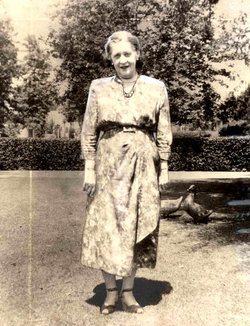
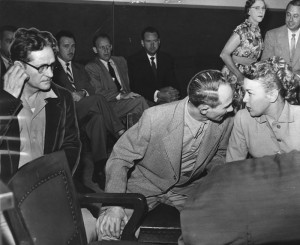
![Barbara Graham's hands. [Photo courtesy LAPL]](https://derangedlacrimes.com/wp-content/uploads/2013/03/grahamhands_00030052-300x220.jpg)
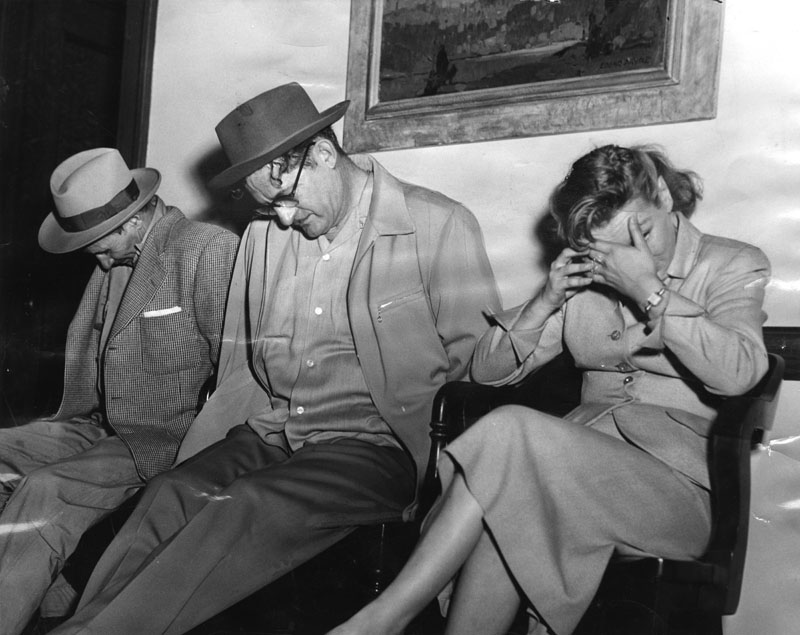



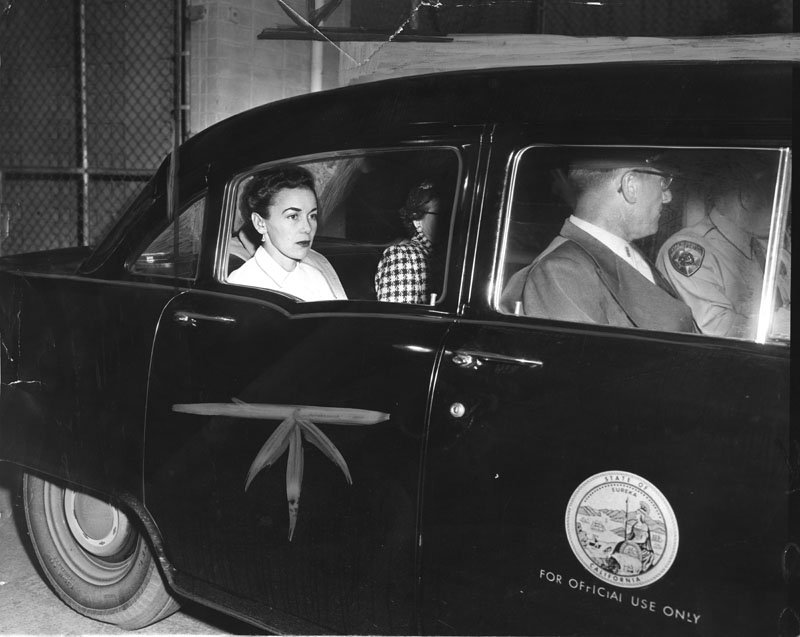
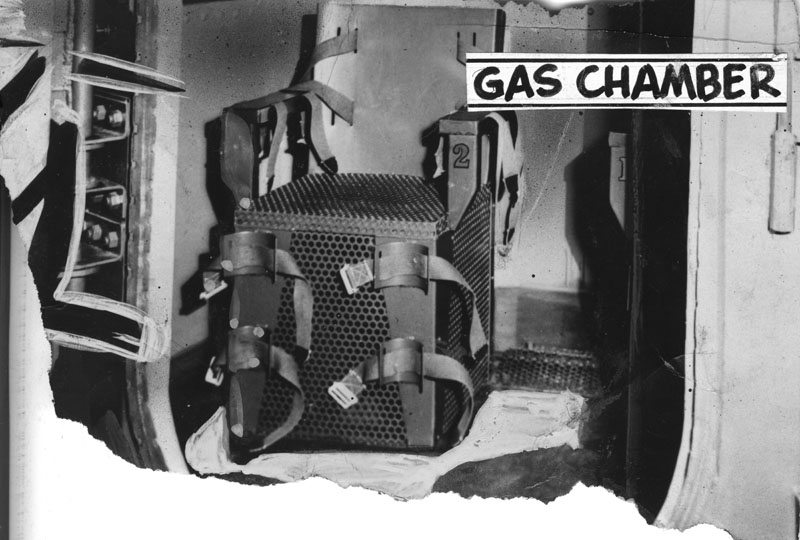
![State Demands Death [Photo courtesy of LAPL]](https://derangedlacrimes.com/wp-content/uploads/2013/03/state-demands-death_00029968.jpg)

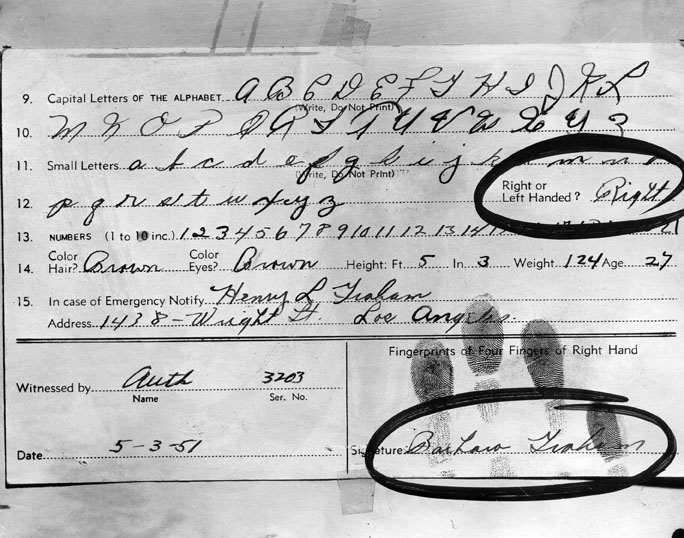
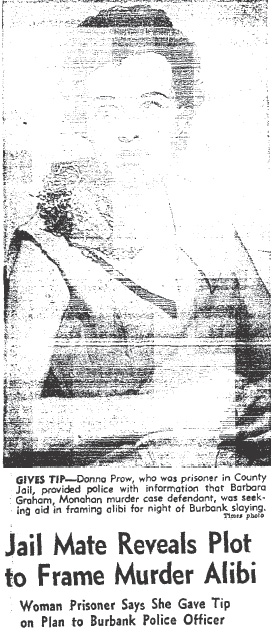
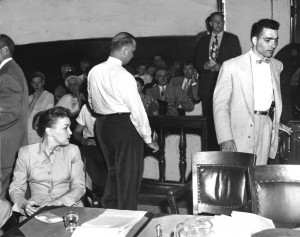

![Harriet Henson [Photo courtesy LAPL]](https://derangedlacrimes.com/wp-content/uploads/2013/03/harriet-henson_00030015-238x300.jpg)
![The jury: three women and nine men. [Photo courtesy LAPL]](https://derangedlacrimes.com/wp-content/uploads/2013/03/three-women_nine-men_00030014.jpg)